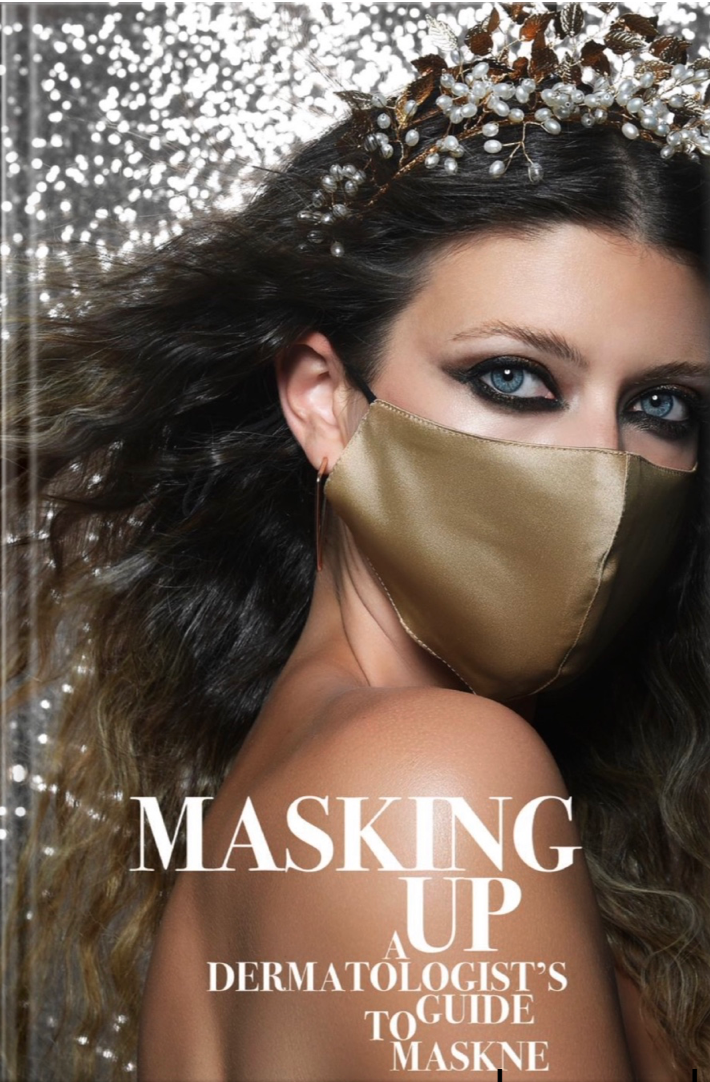
Masking Up - A Dermatologist's Guide to Maskne is written by Dr. Teo Wan Lin, one of Singapore's prominent dermatologists and medical director at TWL Specialist Skin & Laser Centre.
Mask acne or 'maskne' for short is a new term coined during the 2020 COVID-19 pandemic, more precisely known as acne mechanica or occlusion acne to dermatologists. This book is written as a guide to the phenomenon, with skincare, makeup tips for the "new normal" of mask-wearing, as well as information on how to choose the right fabric mask.
Dr. Teo leads the development of a materials science research arm, Dr.TWL Biomaterials, that focuses on ecologically sustainable, novel biomaterials for skin applications. As the first dermatologist-led cosmeceutical textile company, the biomaterials arm develops cutting edge technology for new generation biofunctional textiles. A pioneer dermatologist in the
field of biofunctional textiles development, Dr. Teo’s original research letter “Diagnostic and Management Considerations of Maskne in the Era of COVID-19” was published by the Journal of the American Academy of Dermatology, ranked the top* dermatology journal internationally, in October 2020.
*2019 impact factor rankings published by the Journal Citation Reports (JCR) Web of Science Group.
“CHAPTER ONE
What is Maskne?
Mask acne or ‘maskne’ for short is a new term coined during the 2020 COVID-19 pandemic. It refers to acne that develops over skin that is in the region of the area where we wear a face mask.
How do I know if I have maskne?
The key characteristic of maskne would be that it is:
● occurring primarily in individuals who otherwise do not have a problem with acne. For individuals who have an underlying issue of acne, this could be more complex to diagnose. They may report worse flare-ups in the area covered by the face mask.
● encompassing microcomedones (mini-whitehead) formation in the deeper layers of skin which takes about 6 weeks to surface as active acne, so the onset of acne/worsening of existing acne will fall within this time frame usually.
The appearance of maskne is similar to that of typical acne and can take the form of comedones, papules, and cysts. However, much more significant is the distribution of these acne bumps. Whereas acne vulgaris (a traditional form of acne) can occur predominantly over the oily T-Zone or the lesser-known U-Zone in adult females, maskne exclusively affects the area covered by the face mask. This takes on more of an O-Zone pattern [as shown in figure] - the cheeks, the area around the mouth, around the nose, and the jawline.”
Excerpt From: Dr Teo Wan Lin. “Masking Up: A Dermatologist’s Guide to Maskne”. Apple Books.
”
Excerpt From: Dr Teo Wan Lin. “Masking Up: A Dermatologist’s Guide to Maskne”. Apple Books.
| Language | Status |
|---|---|
|
French
|
Already translated.
Translated by Louise Chaumont
|
|
Portuguese
|
Already translated.
Translated by Andrea Fernandes
|
|
Spanish
|
Already translated.
Translated by Joaquin Godoy
|